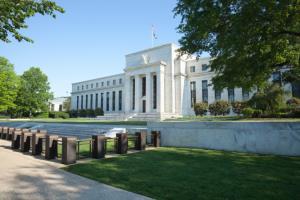The Fed, Interest Rates and Monetary Policy

Today’s post is the first of a two-part series on how the Federal Reserve influences interest rates.
Many people know that the Federal Reserve affects interest rates. However, many may not know exactly how the Fed does that. An article in The Regional Economist discusses the various interest rates the Fed sets.
Vice President and Economist Stephen Williamson discussed three interest rates the Fed sets, either as a target or by administrative fiat:
- The federal funds rate, which is the interest rate financial institutions charge when they lend to other institutions overnight
- The discount rate, which is the interest rate charged by the Fed when it lends to commercial banks in its role as lender of last resort
- The interest paid by the Fed on reserves held by banks, which are essentially checking accounts for financial institutions
Monetary Policy and the Channel System
Williamson explained that, prior to the financial crisis, the Fed conducted monetary policy using what economists call a channel system. The discount rate was the upper limit, the interest rate on reserves was the lower limit, and the fed funds rate was targeted in between. (It should be noted that the Fed couldn’t pay interest on reserves until late 2008, so the lower limit was zero.)
As Williamson pointed out, if the fed funds rate went above the discount rate, then institutions could borrow from the Fed more cheaply than from other institutions. Similarly, if the fed funds rate went below the interest paid on reserves, no bank would lend to another when it could get a higher return by lending to the Fed.
The Move to the Floor System
According to Williamson, the details of how the Fed conducts monetary policy changed in important ways between 2007 and now. In particular, two things happened:
- As previously mentioned, the Fed began paying interest on reserves.
- The Fed purchased lots of assets (such as U.S. Treasuries and agency mortgage-backed securities) through quantitative easing, which led to a large increase in the stock of reserves.
He noted that the large stock of reserves implies that monetary policy works within a floor system now, rather than a channel system, and that the interest rate on excess reserves (IOER) plays a key role. In principle, the Fed could achieve its fed funds rate target by simply setting the IOER.
He wrote: “If the fed funds rate were lower than the IOER, then banks would be able to make a profit from borrowing on the fed funds market and lending to the Fed at the IOER, thus forcing up the fed funds rate. If the fed funds rate were higher than the IOER, then a bank wanting to lend would earn more interest on the fed funds market than by lending to the Fed at the IOER. The large demand for fed funds would then force the fed funds rate down.”
However, theory and reality aren’t agreeing. Tomorrow’s post will examine what has actually happened and describe the adopted solution: a floor with a subfloor.
Additional Resources
- Regional Economist: Interest Rate Control Is More Complicated Than You Thought
- On the Economy: Why Does China Have Large Foreign Exchange Reserves?
- On the Economy: The Great Recession’s Effect on the Federal Budget
Citation
ldquoThe Fed, Interest Rates and Monetary Policy,rdquo St. Louis Fed On the Economy, July 4, 2016.
This blog offers commentary, analysis and data from our economists and experts. Views expressed are not necessarily those of the St. Louis Fed or Federal Reserve System.
Email Us
All other blog-related questions

